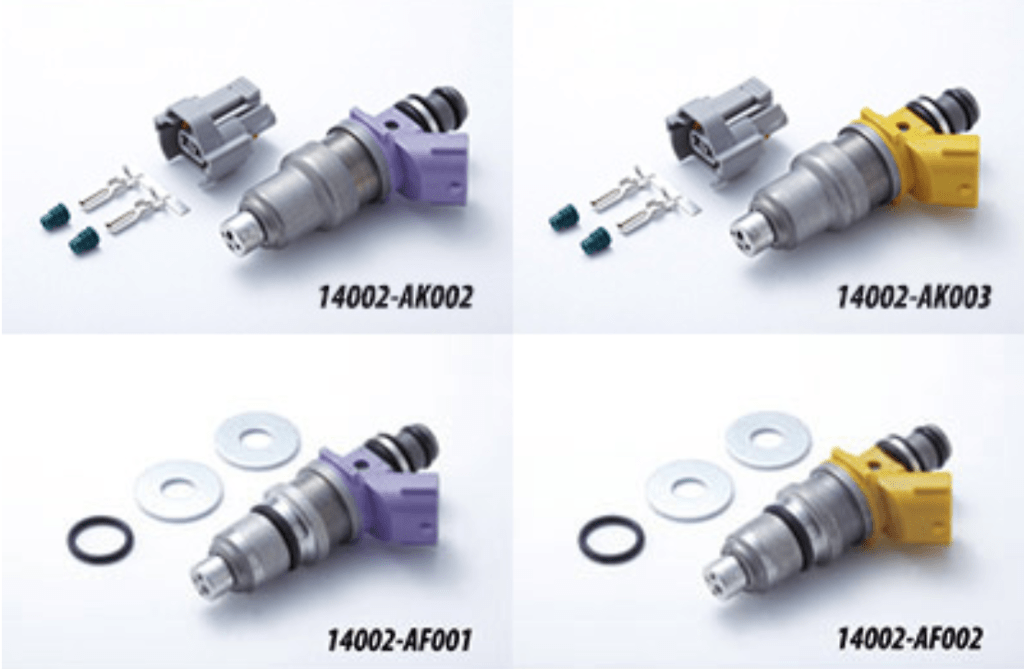The Basic Principles Of Fuel Injectors
Table of ContentsLittle Known Facts About Fuel Injectors.Fuel Injectors for Dummies3 Simple Techniques For Fuel Injectors
The fuel is injected only into the pre-chamber (where it starts to combust), and not directly into the primary combustion chamber. For that reason, this concept is called indirect injection. There exist a number of somewhat various indirect injection systems that have comparable attributes. All Akroyd (hot-bulb) engines, and some Diesel (compression ignition) engines utilize indirect injection.This can be done either with a blast of air (air-blast injection), or hydraulically. The latter technique is far more typical in vehicle engines. Typically, hydraulic direct injection systems spray the fuel into the air inside the cylinder or combustion chamber, however some systems spray the fuel against the combustion chamber walls (M-System).
The latter is the most typical system in modern automobile engines. Direct injection is well-suited for a big range of fuels, including fuel (see fuel direct injection), and diesel fuel. In a typical rail system, the fuel from the fuel tank is provided to the typical header (called the accumulator).
The header has a high pressure relief valve to preserve the pressure in the header and return the excess fuel to the fuel tank. The fuel is sprayed with the help of a nozzle that is opened and closed with a needle valve, run with a solenoid. When the solenoid is not triggered, the spring forces the needle valve into the nozzle passage and avoids the injection of fuel into the cylinder.

Third-generation common rail diesels use piezoelectric injectors for increased accuracy, with fuel pressures as much as 300 MPa or 44,000 lbf/in2 - fuel injectors. Air-blast injection system for a 1898 diesel motor In 1872, George Bailey Brayton gotten a patent on an internal combustion engine that used a pneumatic fuel injection system, likewise developed by Brayton: the air-blast injection.
Most significantly, Diesel increased the air-blast pressure from 45 kp/cm2 (390490 kPa) to 65 kp/cm2 (6,400 kPa). The very first manifold injection system was developed by Johannes Spiel at Hallesche Maschinenfabrik in 1884. In the early 1890s, Herbert Akroyd Stuart established an indirect fuel injection system using a 'jerk pump' to meter out fuel oil at high pressure to an injector.
A manifold-injected Antoinette 8V air travel engine, installed in a maintained Antoinette VII monoplane aircraft. In 1898, Deutz AG started series production of stationary four-stroke Otto engines with manifold injection. 8 years later on, Grade equipped their two-stroke engines with manifold injection, and both Antoinette 8V and Wright aircraft engines were fitted with manifold injection too.
The smart Trick of Fuel Injectors That Nobody is Talking About


Due to the wartime relationship in between Germany and Japan, Mitsubishi likewise had two radial airplane engines using gas direct injection, the Mitsubishi Kinsei and the Mitsubishi Kasei. The very first automobile direct injection system used to operate on gas was developed by Bosch, and was presented by Goliath for their Goliath GP700, and Gutbrod for their Superior in 1952.
The 1954 Mercedes-Benz W196 Formula 1 racing automobile engine utilized Bosch direct injection derived from wartime aircraft engines. Following this racetrack success, the 1955 Mercedes-Benz 300SL, became the very first passenger car with a four-stroke Otto engine that used direct injection. Later, more traditional applications of fuel injection favored the less-expensive manifold injection.
6 litre V8 with Rochester manifold fuel injection Unpowered, continually injecting multi-point injection Bosch K-Jetronic Throughout the 1950s, numerous makers presented their manifold injection systems for Otto engines, including General Motors' Rochester Products Department, Bosch, and Lucas Industries. Throughout the 1960s, extra manifold injection systems such as the Hilborn, Kugelfischer, and SPICA systems were introduced.
Preliminary problems with the Electrojector meant just pre-production cars had it set up so extremely few cars and trucks were sold and none were made available to the general public. The EFI system in the Rambler worked well in warm weather, however was hard to begin in cooler temperatures. Chrysler offered Electrojector on the 1958 Chrysler 300D, DeSoto Traveler, Dodge D-500, and Plymouth Fury, perhaps the very first series-production cars equipped with an EFI system.
The D in D-Jetronic stands for Druckfhlergesteuert, German for "pressure-sensor controlled"). The D-Jetronic was first used on the VW 1600TL/E in 1967. This was a speed/density system, utilizing engine speed and consumption manifold air density to compute "air mass" circulation rate and hence fuel requirements. Bosch superseded the D-Jetronic system with the and systems for 1974, though some vehicles (such as the Volvo 164) continued using D-Jetronic for the following several years.
The Greatest Guide To Fuel Injectors
This method needed extra sensing units to measure the air pressure and temperature level, to calculate mass circulation rate. L-Jetronic was extensively adopted great post to read on European cars of that duration, and a couple of Japanese models a short time later. The first digital engine management system (engine control unit) was the Bosch Motronic presented in 1979.
The EEC-III a single-point injection system. Manifold injection was phased in through the latter 1970s and 80s at an accelerating rate, with the German, French, and U.S. markets leading and the UK and Commonwealth markets lagging rather. Given that the early 1990s, nearly all petrol traveler cars sold in first world markets are geared up with electronic manifold injection.
Fuel injection systems are gradually replacing carburetors in these nations too as they embrace emission policies conceptually comparable to those in force in Europe, Japan, Australia, and North America. In 1995, Mitsubishi presented the very first common-rail petrol direct injection system for guest automobiles. fuel injectors. It was presented in 1997. Subsequently, common-rail direct injection was likewise introduced in traveler cars and truck diesel motor, with the Fiat 1.